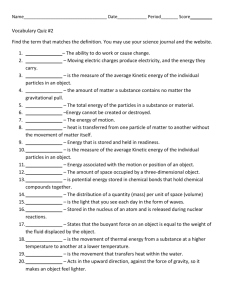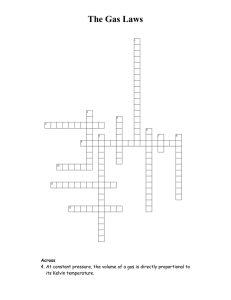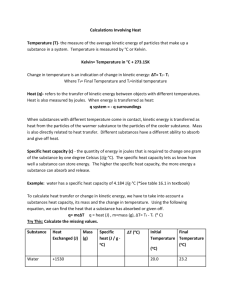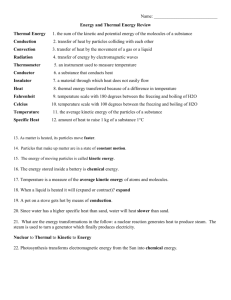Temperature and Kinetic Energy
advertisement
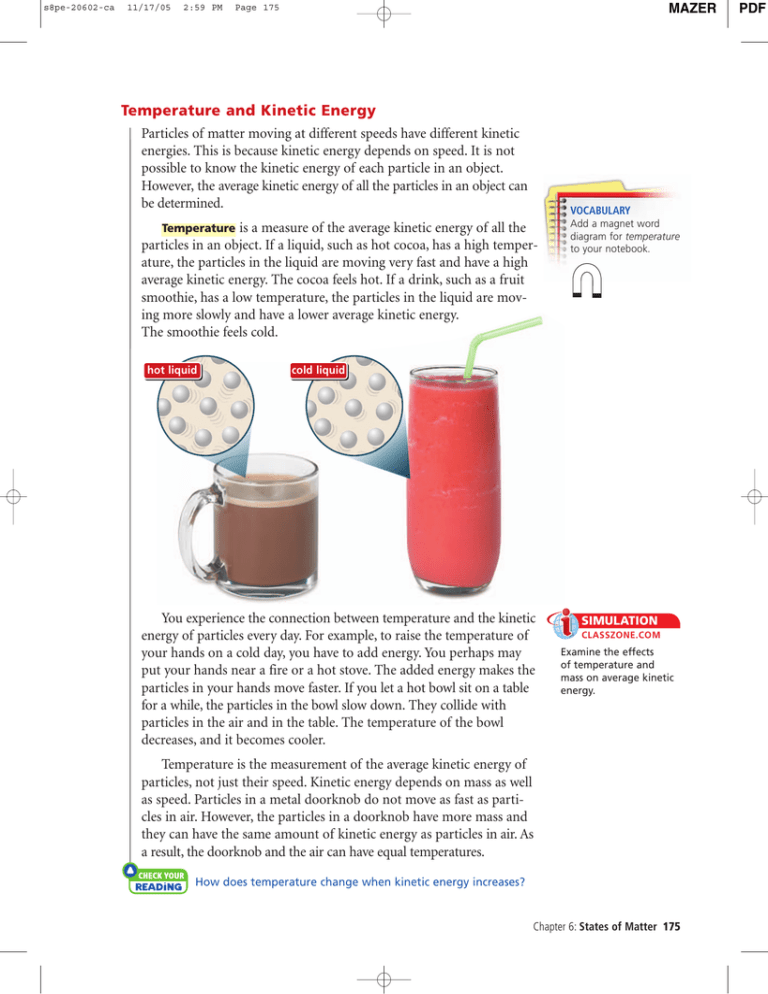
s8pe-20602-ca 11/17/05 2:59 PM MAZER Page 175 Temperature and Kinetic Energy Particles of matter moving at different speeds have different kinetic energies. This is because kinetic energy depends on speed. It is not possible to know the kinetic energy of each particle in an object. However, the average kinetic energy of all the particles in an object can be determined. VOCABULARY is a measure of the average kinetic energy of all the particles in an object. If a liquid, such as hot cocoa, has a high temperature, the particles in the liquid are moving very fast and have a high average kinetic energy. The cocoa feels hot. If a drink, such as a fruit smoothie, has a low temperature, the particles in the liquid are moving more slowly and have a lower average kinetic energy. The smoothie feels cold. Temperature hot liquid Add a magnet word diagram for temperature to your notebook. cold liquid You experience the connection between temperature and the kinetic energy of particles every day. For example, to raise the temperature of your hands on a cold day, you have to add energy. You perhaps may put your hands near a fire or a hot stove. The added energy makes the particles in your hands move faster. If you let a hot bowl sit on a table for a while, the particles in the bowl slow down. They collide with particles in the air and in the table. The temperature of the bowl decreases, and it becomes cooler. SIMULATION CLASSZONE.COM Examine the effects of temperature and mass on average kinetic energy. Temperature is the measurement of the average kinetic energy of particles, not just their speed. Kinetic energy depends on mass as well as speed. Particles in a metal doorknob do not move as fast as particles in air. However, the particles in a doorknob have more mass and they can have the same amount of kinetic energy as particles in air. As a result, the doorknob and the air can have equal temperatures. check your reading How does temperature change when kinetic energy increases? Chapter 6: States of Matter 175 PDF
